Chimichanga Vs Enchilada: Which Mexican Dish Wins?
As a lover of food, venturing into the captivating world of Mexican cuisine often leaves me torn between making an Enchilada or a Chimichanga for dinner. Both dishes, steeped in rich cultural history and flavor, offer a tantalizing treat for the taste buds. It's a challenging choice, to say the least, sparking the fiery debate: Chimichanga (or we can say deep-fried Burritos) Vs Enchilada.
Now, the million-dollar question is, how do we pick a winner here? Do we base it on the flavors, nutritional value, or ease of preparation? Or, perhaps, the answer lies not in the rivalry, but in appreciating each dish for the unique culinary delights they offer. Buckle up, folks! We are about to dive into the exciting world of Chimichangas and Enchiladas.
Also Read: Dungeness Crab vs Snow Crab
Article Includes
What Is A Chimichanga?
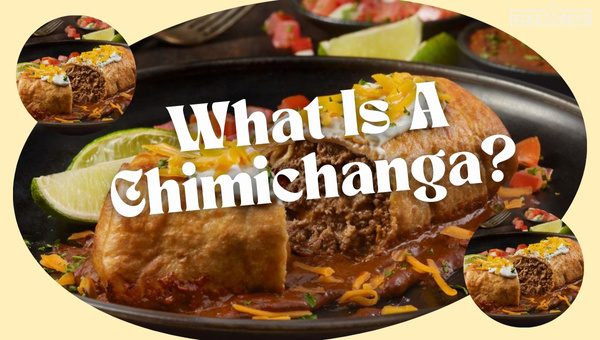
Oh, the delightful Chimichanga! This delicacy consists of a flour tortilla that is most commonly stuffed with some sort of meat—be it beef, chicken, or even fish. It doesn't stop there though. Along with the protein, the tortilla is often filled with a variety of other ingredients, including beans, rice, cheese, or a combination of these. Once stuffed, the tortilla is then rolled into a cylindrical shape similar to a burrito. Afterward, it's deep-fried to achieve that perfectly crisp, golden exterior that is characteristic of a Chimichanga. The result? A crunchy outside that gives way to a gooey, savory, flavorful filling.
Key Elements of a Chimichanga
Chimichanga stands out due to its unique elements:
- Deep-Frying: Unlike other similar dishes, Chimichanga's unique feature is that it's deep-fried. This gives the tortilla a crispy texture that's delightfully contrasted by the soft and flavorful filling inside.
- Filling: As I mentioned earlier, the filling can be pretty versatile. However, some common ingredients found in most Chimichangas are meat (chicken, beef, pork or shrimp), beans, rice, and cheese.
- Serving: Frequently, Chimichangas are topped with sour cream, guacamole, salsa or cheese to enhance the taste. In many cases, it's also served alongside rice or beans as accompaniments.
Tips For Making The Best Chimichangas
As a long-standing fan and home chef of this fantastic dish, I've collected quite a few tricks up my sleeves over the years to perfecting chimichangas. Here's sharing it with you:
The Right Tortillas are Crucial.
Not all tortillas are created equal, and for a chimichanga, you want a good-sized, yet durable tortilla. Opt for medium to large sized flour tortillas. The smaller ones are likely to tear when rolling, and they won't hold as much filling.
Don't Overstuff Your Chimichanga.
Whilst you might be helpful by nature, packing your tortilla with too much filling is a no-no. A burst tortilla in the deep fryer is one kitchen disaster you don’t want. So, remember - a little filling goes a long way!
Master the Art of Rolling.
Folding a tortilla properly will ensure an even, crispy cook when frying. Plus, it prevents any filling from spilling out. Start by folding in the sides, then roll from the bottom to the top.
Pre-cook Your Fillings.
As the chimichanga is deep-fried rather swiftly, make sure your fillings are pre-cooked and warm before you start stuffing. This is especially significant for meats, which need to be thoroughly cooked to be safe for consumption.
Fry at the Right Temperature.
Your cooking oil's temperature can make or break your chimichanga. Too hot, and the tortilla will burn before it gets crispy. Too cool, and the tortilla will absorb too much oil, turning it into a greasy mess. Aim for a temperature of around 350-400 degrees Fahrenheit.
Garnish Like a Pro.
Don’t forget to dress up your Chimichanga post-frying! A dollop of sour cream or guacamole, a sprinkle of fresh cilantro, or a scoop of salsa can bring home the restaurant feel.
What is an Enchilada?
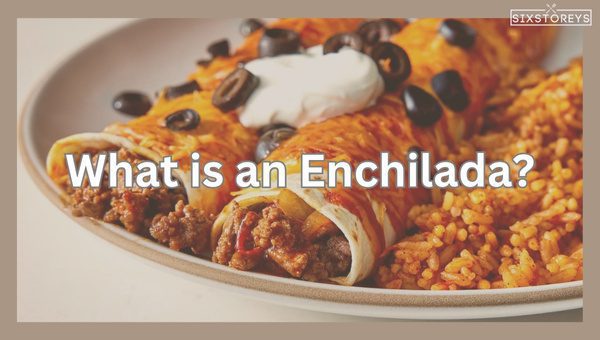
When it comes to iconic Mexican dishes, the Enchilada deserves notable mention. Now, what is an Enchilada? In simple terms, an Enchilada is a stuffed tortilla, generously coated with chili sauce and then baked to scrumptious perfection. Let's delve deeper into this culinary marvel.
Enchiladas: Unwrapped and Revealed
Originating from ancient Mayan cuisine, the core concept of an Enchilada has maintained a consistent presence amidst variation and innovation. Its name comes from the past participle of the Spanish verb "enchilar," implying "to the season with chili" - reflecting the sauce it is lavished with.
At its core, an Enchilada comprises three crucial components - a tortilla (typically made of corn or flour), a filling (which could be meat - like chicken or beef, cheese, beans, or veggies), and a sauce (typically a chili-based sauce, sometimes with tomatoes or tomatillos). The tortilla envelops the filling, then bathed in sauce and often sprinkled with cheese, resulting in a delightful array of flavors, textures, and heat engulfing your palate with every bite.
Enchiladas Beyond Borders: The Variations
Interestingly, Enchiladas have seen countless variations transcending regional boundaries. From the cheesy Enchiladas Suizas and the seafood-stuffed Enchiladas del Mar to the savory Enchiladas Rojas and the breakfast wonder Enchiladas montadas - the versatility is fascinating! It's no wonder this dish has crossed borders, becoming a firm favorite in Tex-Mex cuisine too.
Tips for Making the Best Enchiladas
Armed with knowledge about what an Enchilada is, you may be itching to try your hand at making one. Perfecting an Enchilada may seem somewhat daunting; fear not, though. Here are some tried-and-true tips for cooking up the best Enchiladas right in your own kitchen.
Select Your Ingredients Wisely
Begin with choosing fresh, quality ingredients. When it comes to tortillas, corn is the traditional choice, offering a firmer texture and robust flavor. However, flour tortillas can also work if you prefer a softer, milder base. As for the filling, feel free to get creative! Use tender chicken, flavorful beef, or even jackfruit for a vegetarian twist. And don’t forget to top it off with a well-seasoned chili sauce - this spicy blanket really seals the deal!
Prep Your Tortillas
Remember to preheat your tortillas before stuffing them with the filling. Doing so makes them more soft and flexible, reducing the risk of them tearing while rolling. Just heat them up on a skillet or lightly fry them, but be careful not to make them too crispy.
Be Generous with the Sauce
Don’t hesitate to be liberal with your chili sauce application. A dry Enchilada is no joy to eat, so make sure every inch of your rolled tortillas is sufficiently soaked in sauce to ensure maximum flavor.
Add Cheese for Extra Deliciousness
Cheese lovers, rejoice! Top off your prepped Enchiladas with a generous layer of shredded cheese (think Monterey Jack, Cheddar, or Queso Fresco) before popping them in the oven. It adds an extra layer of gooey deliciousness and ties all the flavors together.
Bake to Perfection
Finally, let the Enchiladas bake in the oven until the cheese is golden and bubbly, creating a textural juxtaposition between the crispy exterior and the tender inside. If you’re heating pre-made Enchiladas, ensure they’re heated throughout before serving for the best eating experience.
There you have it – a comprehensive guide to understanding the Enchilada and handy tips for making them at home. All that's left is to roll up those sleeves, heat up the oven, and dive in!
What is the Difference Between Chimichanga And Enchilada?
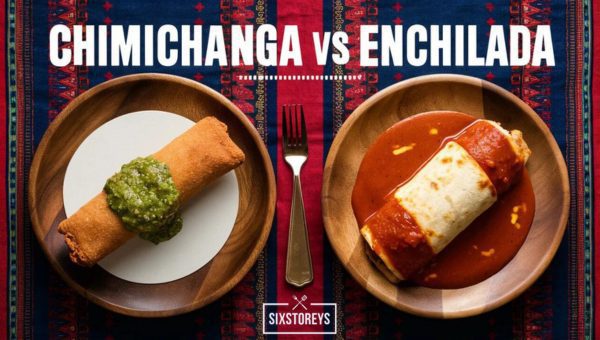
Choosing between a chimichanga and an enchilada can keep most food lovers up at night. This tricky choice stems from the intricate differences and unique flavors that both dishes bear. So, let's unravel this delicious dilemma and dig into the variables that set the two apart.
The Composition
The first noticeable difference when comparing chimichanga vs enchilada lies in their construction. Both dishes are built with tortillas as their base, but how they are assembled and finished truly sets them apart.
Chimichangas, originating from northern Mexico and popular in Tex-Mex cuisine, are deep-fried burritos. They're filled with a variety of ingredients, most commonly including meat, cheese, and beans. Once the filling is tucked in, the tortilla is folded into a neat closed package and plunged into sizzling oil until it turns golden brown and crispy.
Enchiladas, on the other hand, are traditional Mexican dish made from tortillas rolled around a filling- generally shredded meat or cheese, and bathed generously in chilli sauce. Unlike their deep-fried cousin, these rolls are then baked in the oven to melty perfection.
Flavor Profile
Though both dishes use similar ingredients, each has its distinctive taste.
A chimichanga's deep-fried tortilla envelops the tender, flavorful filling, creating a crispy outer layer that contrasts with the soft, savory interior. The deep-frying process also gives chimichangas an extra layer of rich, toasted flavor.
Enchiladas distinguish themselves with their smothered chili sauce. The sauce, typically made from chili peppers, garlic and a host of Mexican spices, seeps into the rolled tortillas, infusing each bite with a burst of tangy, spicy, and rich flavors. This makes enchiladas juicy and messy, a stark contrast to the crunchy, finger-food nature of chimichangas.
Presentation and Serving
The way these dishes are served also differs.
A chimichanga is usually presented simply, just whole or cut in half, allowing the crispy texture to shine. Toppings, if any, are light and typically include a drizzle of sour cream, guacamole, cheese, or salsa.
Enchiladas, conversely, are always drowned in sauce and traditionally served in a casserole manner, with several pieces laid out in a dish. The presentation is typically more saucy and colorful, with a generous sprinkling of extra cheese, dollops of sour cream, and garnishes of fresh cilantro on top.
What Sets A Chimichanga Apart From An Enchilada (And A Burrito)?
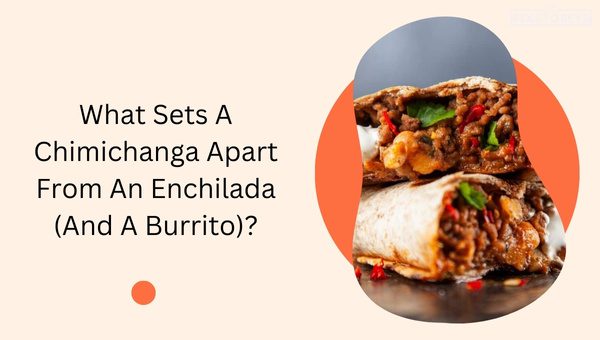
Understanding the differences between a Chimichanga and an Enchada (and let's add in the Burrito for good measure), requires us to enter the heart of Mexican cuisine. All three dishes have some overlapping ingredients but what sets them apart lies in how they are prepared and served.
The Foundations: How Chimichangas are Made
The Chimichanga is essentially a deep-fried burrito. It's concocted by rolling a tortilla around a variety of fillings, predominantly meat, cheese, rice, and beans. The filled tortilla is then deep-fried until it achieves an eye-catching golden-brown hue. The crunchy texture of the Chimichanga is what really sets it apart. In Arizona, you'll even find the Chimichanga served with toppings such as sour cream, cheese, guacamole, or salsa, conjuring up an appetite-inducing masterpiece.
Enchiladas: The Art of Making
An Enchilada is a corn tortilla rolled around varied fillings and smothered with chili pepper sauce. The chosen fillings could range from meat, cheese, beans to sea-food and vegetables. No Enchilada is complete without its beloved chili sauce which is generously ladled over the rolled tortillas before it's all oven-baked to perfection.
Toppings for Enchiladas often include shredded lettuce, diced tomatoes, chopped onions, sliced olives and a drizzle of sour cream. The soft, flavorful Enchilada is more about the chili sauce flavor seeping into the tortilla, rather than texture.
The Commoner: Burrito
A Burrito is a dish in Mexican and Tex-Mex cuisine consisting of a large wheat flour tortilla filled with ingredients such as beans, cheese, rice, and meat. Nothing is fried here, folks! The burrito is typically hand-held and ready to eat with no need for utensils which is an advantage on the go!
You'll find many burritos, especially the wet ones, topped with sauces and extra cheese then briefly oven-baked to melt the cheese and heat through.
| Chimichanga | Enchilada | Burrito | |
| Main Ingredient | Tortilla | Tortilla | Tortilla |
| Cooking Method | Deep-Fried | Baked | No Cooking/Steamed |
| Texture | Crunchy | Soft | Soft |
| Filling | Meat, Cheese, Rice, Beans | Meat, Cheese, Beans, Sea-food, Veggies | Meat, Cheese, Rice, Beans |
| Sauce | Topping | Integral | Optional topping |
| Serving style | Cut in half, toppings sprinkled | Served whole, toppings sprinkled | Hand-held and ready to go |
Once we break it down it becomes clear how the texture, preparation, and accepted norms for fillings set these three apart. A Chimichanga is the crunchy cousin of the soft Burrito, while an Enchilada is soft but considerably more saucy than its counterparts. So whether you prefer your tortilla fried, smothered in sauce, or simply filled and rolled, there is a Mexican dish waiting for you.
Although they originated from the same roots, each one has established its unique identity in the culinary world. But no matter what you choose, be it Chimichanga, Enchilada, or a Burrito, you are surely in for a treat packed with flavor and deliciousness!
Also Read: East Coast vs West Coast Oysters
Battle Of The Titans: Enchiladas And Chimichangas Comparison Table
We’ve all heard the familiar adage, “you can’t judge a book by its cover.” The same rings true when comparing enchiladas and chimichangas. Despite their similar appearances, these two constructs of Mexican cuisine differ significantly in their preparation, taste, and overall culinary experience.
The Breakdown: Enchiladas Vs Chimichangas
Contrary to popular belief, enchiladas and chimichangas aren't as similar as many may think. For starters, an enchilada is a corn tortilla wrapped around a filling of meat or cheese, covered in chili sauce, and baked. The process of baking allows for the red chili sauce to permeate the tortilla, creating a delightful blend of flavors.
Ingredients for Enchiladas:
- Corn tortillas
- Filling (beef, chicken, cheese, beans, etc.)
- Red chili sauce
- Cheese for topping
On the other hand, a chimichanga is a flour tortilla wrapped around a protein-laden filling and deep-fried to crispy perfection. The chimichanga is typically crispier due to being deep-fried and often served with a side of sour cream, guacamole, or pico de gallo.
Ingredients for Chimichanga:
- Flour tortillas
- Filling (beef, chicken, cheese, beans, etc.)
- Oil for frying
- Sour cream, guacamole, or pico de gallo for serving
In short, while both dishes feature tortillas and hearty fillings, their preparation methods and taste profiles distinctively set them apart.
Nutritional Two-Face: Which One Is Healthier?
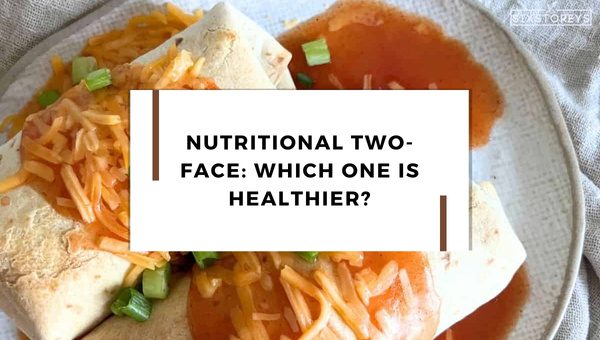
When considering a meal option, it's essential not to neglect the nutritional aspect. If you're watching your diet or aiming to eat healthier, knowing the nutritional value of enchiladas and chimichangas can give you a clearer understanding and help you make an informed decision.
A deeper dive into Enchiladas and Chimichangas
When we pit enchiladas against chimichangas from a nutritional standpoint, both have their pros and cons. Let’s break it down for easier understanding:
Enchiladas
Depending on the ingredients used as the filling and the amount of cheese or sauce slathered on top, enchiladas can be relatively low in calories and fat. The significant difference in calorie and fat content lies in using lean proteins like chicken or vegetables as fillings instead of beef or cheese.
However, enchiladas can be high in sodium due to the sauces and cheeses. But this drawback can be curtailed by opting for homemade sauces or low-sodium versions available in markets.
Chimichangas
Chimichangas, being deep-fried burritos, are inherently higher in caloric value and fat content due to the additional oil absorbed during frying. However, the exact caloric and fat content may vary depending on the type of oil used and the deep frying method.
While chimichangas are much loved for their crispy texture, the deep frying process may deter those following a health-conscious diet. Besides, the high sodium content from sauces and fillings remains consistent in chimichangas - an aspect that needs consideration.
While both dishes offer a burst of sensational flavors, enchiladas are considered to be healthier due to their lower calorie and fat content. However, if one doesn't mind an occasional treat, chimichangas can certainly find a place in a balanced dietary regime. Remember, moderation is key! Unique elements characterize each dish, and it boils down to personal preference and dietary needs.
Unveiling The Deep-Fried Mystery: Are Chimichangas Just Deep-Fried Burritos?
Yes, Chimichangas are just deep-fried Burritos. Yet, as simple as the answer may seem, the intricate differences that set these two apart are where the real magic lay.
The Making of a Chimichanga and a Burrito
A Burrito essentially involves a flour tortilla folded in over a filling to create a cylindrical shape. This delicious parcel can conceal anything from meats to beans, rice, cheese, or even veggies.
A Chimichanga, on the other hand, begins as a Burrito would – filled, folded tortillas. The variation comes at the end of the preparation, where the Burrito-like package is deep-fried to create a Chimichanga. The deep fry gives the Chimichanga that characteristically crispy exterior that contrasts perfectly with the soft and mouthwatering interior.
Why Deep-Fry a Burrito?
You might be wondering, why bother deep-frying a perfectly good Burrito? Well, the process profoundly changes the flavor and texture profile of the dish. The deep fry makes the tortilla exterior crispy and golden, adding an entirely new flavor dimension that keeps you digging for more!
In essence, while a Chimichanga starts its life much like a Burrito, its unique finishing touches truly sets it apart.
Chimichanga Vs Enchilada: A Calorie Showdown
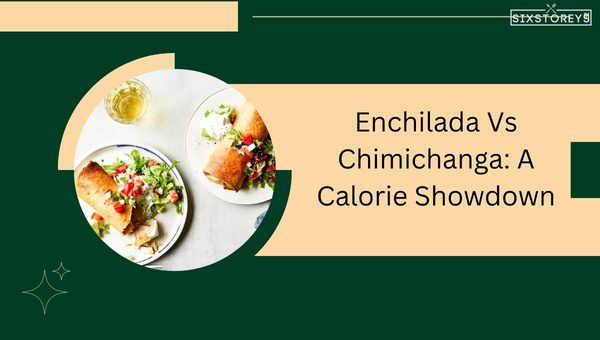
As delightful as both these dishes are, the age-old question of calories comes to the forefront. So, which one strikes a balance between taste and well-being?
Caloric Content: Enchiladas
Traditional Enchiladas consist of corn tortillas filled with a wide variety of ingredients such as cheese, beans, potatoes, or meat, often topped with some form of chili sauce. A serving of Enchiladas (considering two Enchiladas per serving) typically contains somewhere between 300 and 400 calories. The calorie content can vary widely though, based on the specific ingredients used.
Caloric Content: Chimichangas
Now moving to Chimichangas, these deep-fried delights are usually filled with meat such as chicken, beef or pork along with beans or cheese, and served accompanied by a dollop of sour cream or guacamole. A single average-sized Chimichanga packs about 750-800 calories. This makes Chimichanga a more calorie-packed choice compared to the Enchilada.
The Spice Factor: How the Heat Levels Differ in Chimichangas and Enchiladas?
When it comes to Mexican cuisine, we often associate it with spices and heat. As I navigate through the distinct culinary spheres of Chimichangas and Enchiladas, one of the first things that pique my interest is their spice profile.
Understanding the Spice Spectrum of Chimichangas
First, let's dissect the spice factor in Chimichangas. Traditionally, Chimichangas constitute flour tortillas filled with meat (usually chicken or beef) or beans, cheese, and then deep-fried to golden perfection. The heat in a Chimichanga primarily relies on the type of meat you select or the spices used for preparing the filling. For instance, if you're using beef, you have the freedom to tweak its heat level using spices like cumin and paprika. Green chillies also make a great addition if you're hunting for an extra kick.
However, a significant heat contributor to Chimichangas is the dipping sauces—it's not uncommon for restaurants or home cooks to pair Chimichangas with spicy salsa or hot sauce. In essence, the spice level of a Chimichanga can be easily modified based on your preference.
Navigating the Heat Levels in Enchiladas
Enchiladas, on the other hand, carry a different story. At its foundation, an Enchilada is a corn tortilla rolled around a filling and drenched in chili sauce. The heat in an Enchilada is usually more pronounced than that in a Chimichanga.
The main reason for this lies in the chili sauce — typically made from dried red chili peppers—making it spicy by default. Furthermore, fillings like shredded chicken, ground beef or cheese, and diced vegetables are often seasoned with spices like chili powder or jalapenos, raising the spice quotient. However, much like its counterpart, you are in control of how fiery your Enchilada turns out by regulating the amount of chili and spices used.
Vegetarian Alternatives: Best Meat-Free Options for Chimichangas and Enchiladas
Amidst the vibrant variety that Mexican cuisine offers, it's a myth that vegetarian options are limited. There are plenty of ways to make these classic dishes without any trace of meat, using delicious meat-free ingredients and substitutes.
Delicious Meat-free Twists to a Classic Chimichanga
Chimichangas are pretty versatile when it comes to the filling. You can experiment with plenty of vegetarian alternatives. How about a hearty mix of beans and cheese? Start with a chunky blend of black or pinto beans, diced tomatoes, and peppers. For the cheese, feel free to opt from a variety of choices like Monterey Jack or Cheddar.
If you're into tofu, consider grilling pieces of tofu and adding them into your mix for an exciting twist! Vegetable Chimichangas can also focus on other ingredients like corn, rice, bell peppers, zucchini, or any other veggies that take your fancy.
The Charm of Meatless Enchiladas
Making Enchiladas vegetarian is a breeze. Jackfruit makes a perfect alternative for shredded chicken or beef due to its stringy texture. Season it well using traditional Mexican spices and herbs, and you've got a delectable filling. If you're in the mood for something cheesy, whip up some spinach and cheese Enchiladas, using a mix of fresh spinach sautéed with garlic, mixed with ricotta and mozzarella cheese.
For a more complex flavor profile, consider roasting vegetables like peppers, onions, and zucchini. Toss them in Mexican seasonings, roll them up in your corn tortillas before smothering them in your homemade Enchilada sauce. Sprinkle some cheese and bake until molten and bubbly.
No matter what route you take, rest assured that vegetarian Chimichangas and Enchiladas have the potential to be every bit as hearty, satisfying, and delicious as their meat counterparts!
Remember - whether you're debating the spice levels of Chimichangas versus Enchiladas or pondering vegetarian alternatives to these traditional Mexican dishes, the real fun lies in the journey of exploration and making your personalized version of these dishes. Happy cooking!
Also Read: Hand Roll vs Cut Roll Sushi
Frequently Asked Questions
What is the main difference between a Chimichanga and an Enchilada?
The key difference lies in the preparation. An Enchilada is a filled and rolled tortilla smothered with chili sauce, while a Chimichanga is a deep-fried burrito-style dish.
What actually is a Chimichanga?
A Chimichanga is essentially a deep-fried burrito, usually filled with meat, cheese, and other ingredients, then tightly wrapped in a tortilla. This Mexican dish is typically garnished with salsa, guacamole, and sour cream.
How does an Enchilada differ?
An Enchilada is a tortilla rolled around a filling, typically of meat or cheese, before being covered in a chili sauce. It's then baked in an oven, often with a sprinkle of cheese on top.
How can I make my Chimichangas extra crispy?
For extra crispy Chimichangas, I find that frying them in canola oil over medium heat until they turn a golden brown does the trick. Don't forget to flip them for even crispiness!
What's the secret to flavorful Enchiladas?
The secret lies in the chili sauce. Opt for a homemade sauce or a high-quality store-bought variety. Also, don't shy away from seasonings such as garlic, onion, and chili powder.
How do Chimichangas and Enchiladas rank health-wise?
Well, this depends on the filling and preparation. Generally, Enchiladas might be a tad healthier due to being baked instead of deep-fried like a Chimichanga.
Are Chimichangas just deep-fried Burritos?
While similar, a Chimichanga is typically larger and has a tighter wrap before being deep-fried. It's a kind of fancy sibling to the traditional Burrito.
How many calories are in an Enchilada versus a Chimichanga?
This can vary depending on the size and filling but generally, a Chimichanga can have around 800-1,000 calories due to it being deep-fried, while an Enchilada might have around 200-300 calories per serving.
What is the best way to reheat Enchiladas?
The oven is your best bet. Preheat to 375°F (190°C) and heat for about 15 to 20 minutes. This should keep them moist yet ensure they’re heated through.
Conclusion
In the end, it all boils down to personal preference when it comes to the Chimichanga Vs Enchilada debate. These Mexican culinary gems, while sharing a few common traits, each carry their unique flavors and textures. Whether it's the deep-fried crispy decadence of a Chimichanga or the smothered, baked goodness of an Enchilada, they both bring something special to the table. So, why not give a shot at preparing both and see which one tickles your taste buds most? But remember, regardless of your choice, the key to capturing the heart of Mexican cuisine lies in enjoying the process as much as the result. Viva La Mexico!
